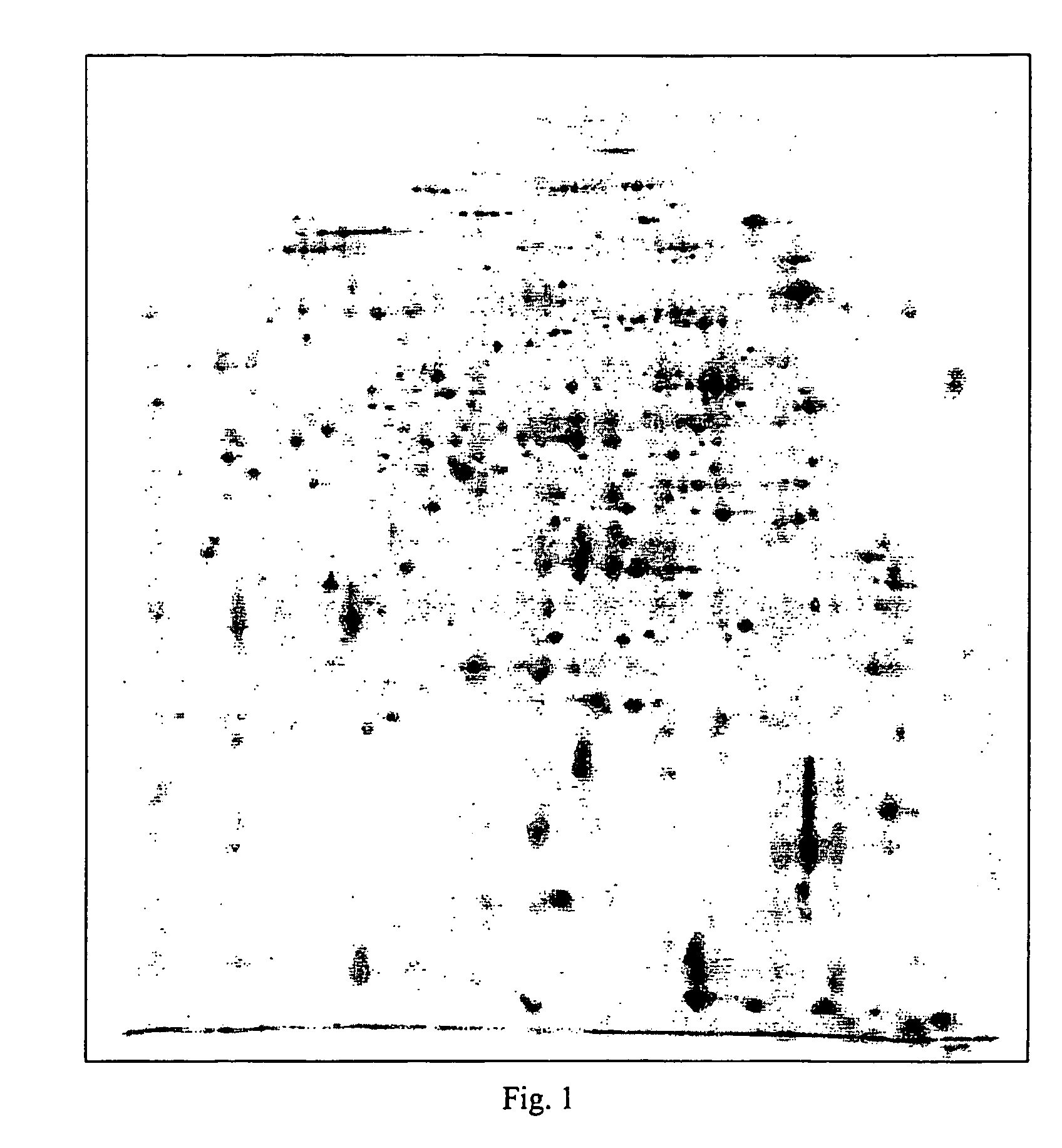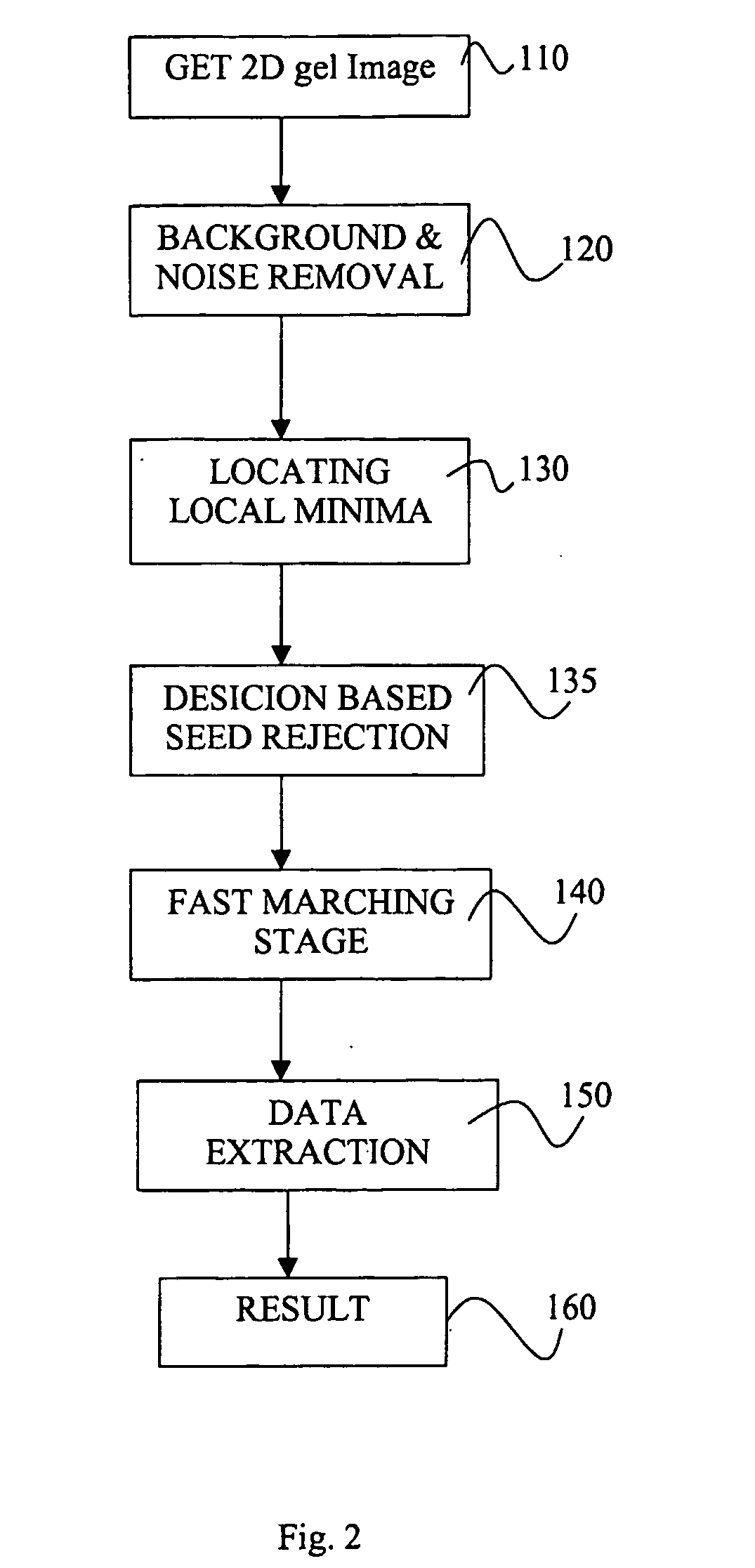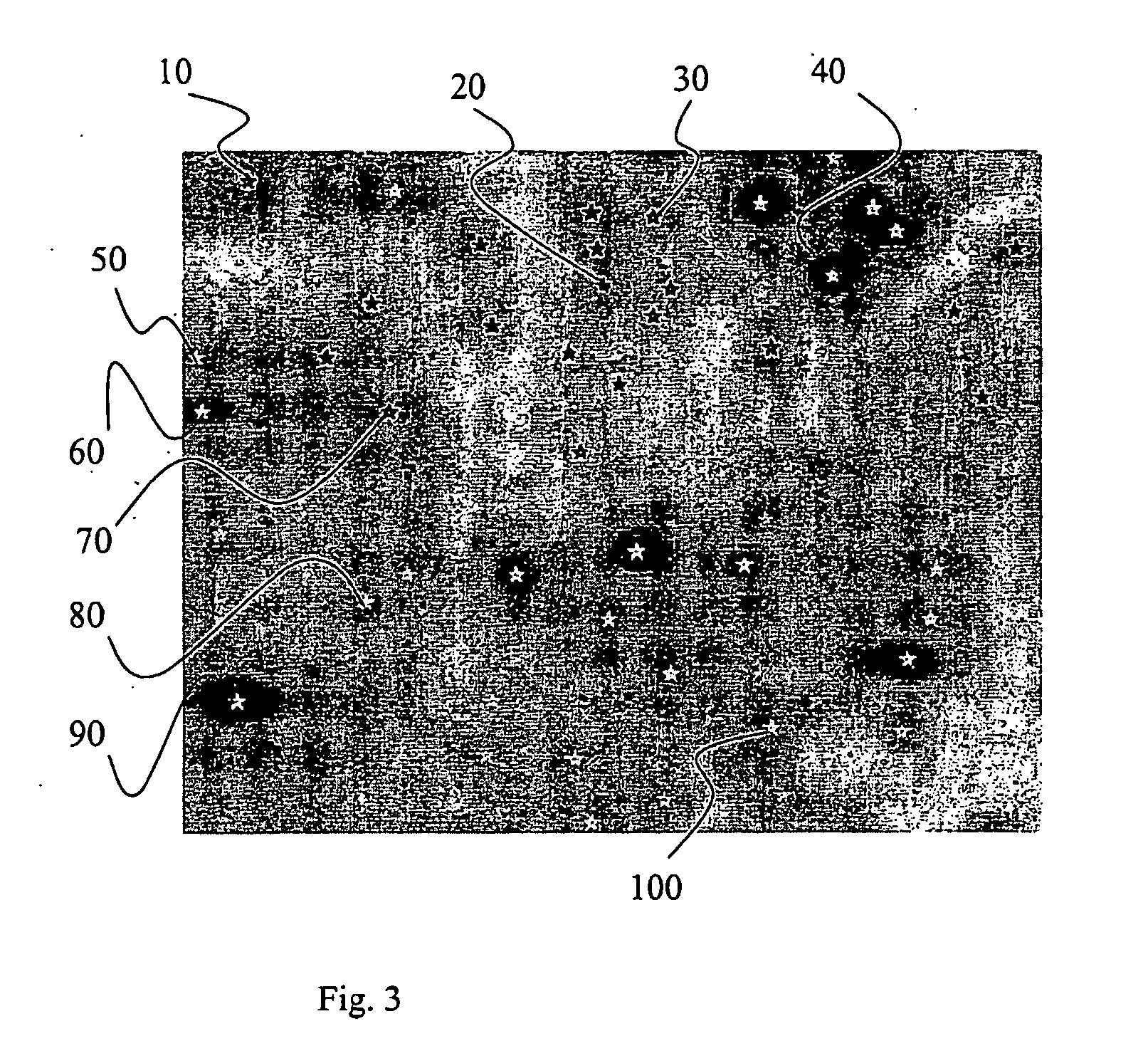Method and means for 2d-gel-image segmentation
a 2d gel and image technology, applied in the field of proteomics, can solve the problems of difficult and time-consuming task of human eye to identify the different protein spots, unparallel in its ability to separate and array complex proteins, and achieve the effect of more accurate final interpretation results
- Summary
- Abstract
- Description
- Claims
- Application Information
AI Technical Summary
Benefits of technology
Problems solved by technology
Method used
Image
Examples
Embodiment Construction
Overview
[0038] The present invention shall now be described with reference to the accompanying figures. The method according to the invention is typically carried out by a software program running on a computer.
[0039]FIG. 2 illustrates a schematic block diagram for the image processing and segmentation method according to the present invention. The 2D gel image is obtained in a digital format, e.g. in a TIF-format, by conventional scanning, in step 110. Thus, the image is represented as a pixel intensity matrix I(x,y), where I is the grey scale intensity in a given pixel position (x,y). Dark areas, as illustrated herein, have lower intensity values than lighter areas. Since the 2D gel image is represented as a numerical matrix, each pixel will have 8 “close neighbour”-pixels, except for the edge pixels, which will have 5 “close-neighbour”-pixels, and the corner pixels, which will have 3 “close neighbours”.
[0040] The image is then subject for pre-processing in step 120 in order t...
PUM
 Login to View More
Login to View More Abstract
Description
Claims
Application Information
 Login to View More
Login to View More - R&D
- Intellectual Property
- Life Sciences
- Materials
- Tech Scout
- Unparalleled Data Quality
- Higher Quality Content
- 60% Fewer Hallucinations
Browse by: Latest US Patents, China's latest patents, Technical Efficacy Thesaurus, Application Domain, Technology Topic, Popular Technical Reports.
© 2025 PatSnap. All rights reserved.Legal|Privacy policy|Modern Slavery Act Transparency Statement|Sitemap|About US| Contact US: help@patsnap.com



